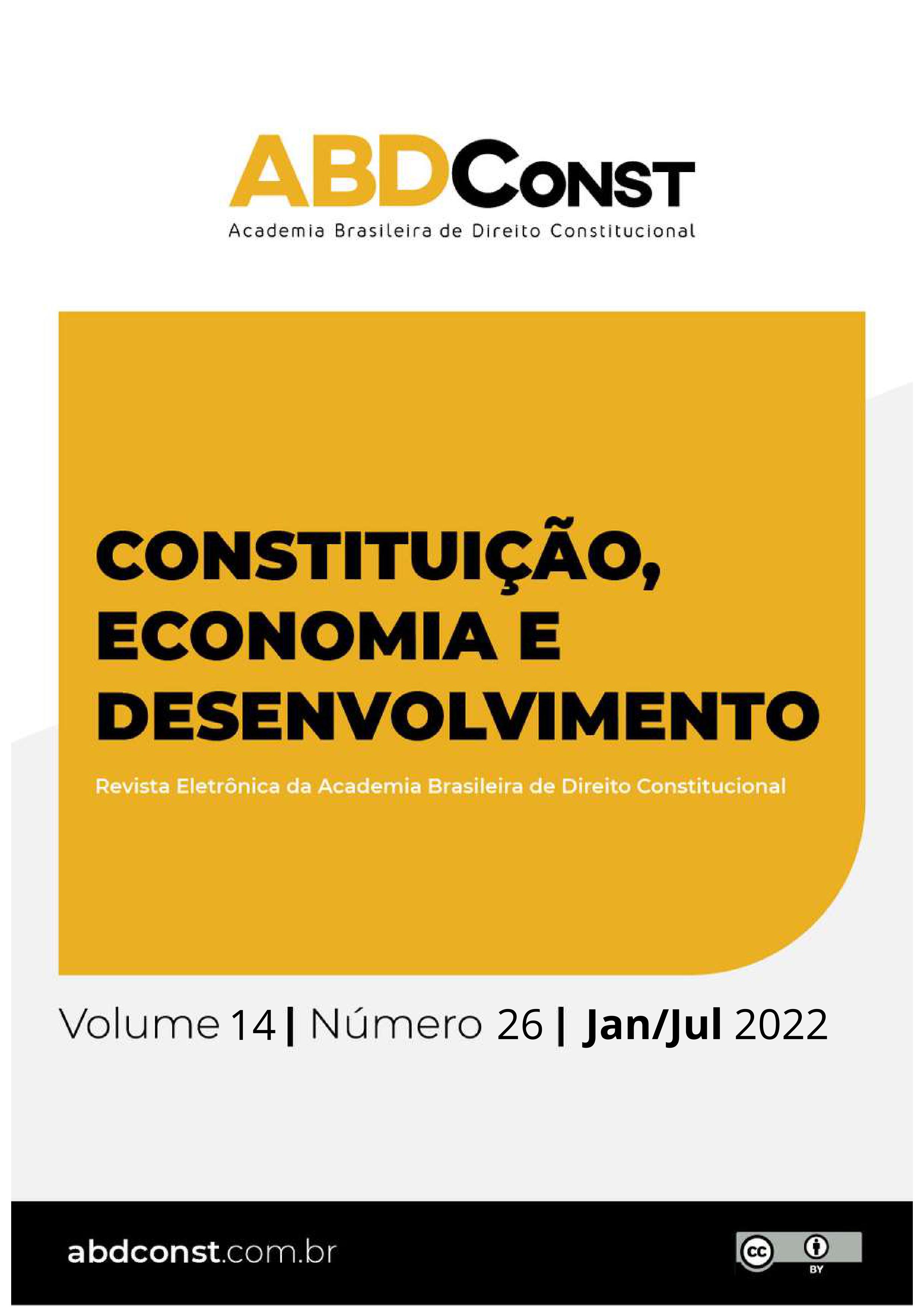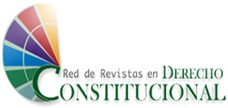DISCOURSE OF HATE
A STUDY BASED ON THE GUARANTEE OF FREEDOM OF EXPRESSION AND ITS LIMITS
Keywords:
Hate Speeches, Freedom of Expression, DiscriminationAbstract
The paper addresses the controversy of hate speeches and their treatment given the need to guarantee freedom of expression, alongside the human dignity of different social groups. Therefore, a comparative study of US and Brazilian law is carried out in relation to the protection of this right according to its domestic and international legislation. Then, the conceptions regarding the hateful speech against minorities are presented. In addition, the text addresses the understanding of the Brazilian judiciary on the issue, critically analyzing the performance of the Supreme Court in order to propose the best way to harmonize the free expression of thought with the need to suppress any act of discrimination and intolerance. In methodological terms, the work adopts the analytical and dogmatic procedure to develop the exhibition. As a result, the conclusion is reached that the parameters used in Brazilian law for the prohibition of hate speech are unsatisfactory, resulting in the realization of the need to build alternative mechanisms to control extremist speech.
References
BINENBOJM, Gustavo. “Meios de comunicação de massa, pluralismo político e democracia deliberativa: as liberdades de expressão e imprensa nos Estados unidos e no Brasil”, In: SARMENTO, Daniel; GALDINO, Flávio, Direitos fundamentais: Estudos em homenagem ao professor Ricardo Lobo Torres, Rio de Janeiro: Renovar, 2006.^
BRUGGER, Winfried. Proibição ou proteção do discurso do ódio? Algumas observações sobre o direito alemão e o americano. Revista de Direito Público, v. 15, n. 117, jan./mar (2007): p. 117-136.
CASTRO, Matheus Felipe de. FREITAS, Riva Sobrado de. Liberdade de Expressão e Discurso do Ódio: um exame sobre as possíveis limitações à liberdade de expressão, Revista Sequência, v. 66, jul. (2013): 327-355.
DIAS, Roberto. “Liberdade de expressão: biografias não autorizadas”. Direito, estado e sociedade, n. 41, jul./dez., p. 204‐224, 2012.
DIMOULIS, Dimitri; MARTINS, Leonardo. Teoria Geral dos Direitos Fundamentais, São Paulo: Atlas, 2014.
DWORKIN, Ronald. O direito da liberdade: A leitura moral da Constituição norte-americana, trad. Marcelo Brandão Cipolla, São Paulo: Martins Fontes, 2006.
EMERSON, Thomas. “Toward a general theory of the first amendment”, 72 Yale Law journal, 877, 1963, que afirma que “The command of the first amendment is "absolute" in the sense that "no law" which "abridges" "the freedom of speech" is constitutionally valid”.
EMPT, Martin. “Virtuelle Kinderpornografie als verfassungsrehtlich geschützte Meinungsfreiheit?” ZUM – Zeitschrift für Urheber und Medienrecht, p. 613-620, heft 8/9, 2002.
FARIAS, Edilson Pereira. Colisão de direitos: a honra, a intimidade, a vida privada e a imagem versus a liberdade de expressão e informação, Porto Alegre: Sérgio Fabris, 2000.
HALL, Evelyn Beatrice. The friends of Voltaire, Londres: Smith Elder & co., 1906.
IPSEN, Jörg. Staatsrecht II: Grundrechte, 13. Auf. München: Franz Vahlen, 2010.
LAFER, Celso. Parecer - O caso Ellwanger: anti-semitismo como crime da prática do racismo, BRASÍLIA, a. 41, n. 162, abr./jun. (2004): p. 53-89.
LAURENTIIS, Lucas Catib de. A proporcionalidade no direito constitucional: origem, modelos e reconstrução dogmática, São Paulo: Malheiros, 2017.
LEVIN, Abigail. “Pornography, hate speech and their challenge to Dworkin’s egalitarian liberalismo”, Public affairs Quarterly, v. 23, n. 4, p. 357-373, 2009.
MARTINS, Leonardo. Liberdade e Estado Constitucional: leitura jurídico-dogmático de uma complexa relação a partir da teoria liberal dos direitos fundamentais, São Paulo: Atlas, 2012.
MASING, Johannes. “Meinungsfreiheit und Schutz der verfassungsrechtlichen Ordnung”, JZ - Juristen Zeitung, 67. Jahrgang, . n. 12, p. 585-592, 2012.
MEIKLEJOHN, Alexander. “The first amendment is an absolute” The Supreme Court Review, p. 245-266, 1961.
MENDES, Gilmar. A Jurisdição constitucional no Brasil e seu significado para a liberdade e a igualdade. Disponível em: . Acesso em: 02/09/2016.
MENDES, Gilmar Ferreira; BRANCO, Paulo Gustavo Gonet. Curso de direito constitucional, São Paulo: Saraiva, 2014.
MENDES, Gilmar Ferreira. Direitos fundamentais e controle de constitucionalidade: estudos de direito constitucional, São Paulo: Saraiva, 2012.
MEYER-PFLUG, Samantha Ribeiro. Discurso do ódio. (Doutorado em Direito Constitucional). Pontifícia Universidade Católica de São Paulo, São Paulo, 2008.
MILL, John Stuart. Sobre a Liberdade, Petrópolis: Vozes, 1991.
MICHAEL, Lothar; MORLOK, Martin. Direitos fundamentais, São Paulo: Saraiva/IDP, 2016, p. 207.
MIRANDA, Pontes de. Comentários à Constituição de 1967, São Paulo: Revista dos Tribunais, 1968, v. IV.
POST, Robert C. Meiklejohn’s mistake: individual autonomy and the reform of public discourse. Constitutional domains – democracy, community, management, Colorado University Law Review, n. 64 (1995): 1109-1137.
_____. “Reconciling theory and doctrine in first amendment jurisprudence”, California Law Review, Vol. 89, p. 2355-2374, January 2001.
REALE Jr, Miguel. Limites à liberdade de expressão, Espaço Jurídico, v. 11, n. 2, jul./dez. (2015): p. 374-401.
SARLET, Ingo Wolfgang. MARINONI. Luiz Guilherme. MITIDIERO, Daniel. Curso de direito constitucional,São Paulo: Editora Revista dos Tribunais, 2012.
SARMENTO, Daniel. “A liberdade de expressão e o problema do Hate Speech”, In: Livres e iguais: estudos de direito constitucional, Rio de Janeiro: Lumen Juris, 2006, p. 207-256
SCHÄFER, Gilberto. LEIVAS, Paulo Gilberto Cogo. SANTOS, Rodrigo Hamilton dos. Discurso de ódio: Da abordagem conceitual ao discurso parlamentar, RIL Brasília, a. 52, n. 207, jul./set. (2015): p. 143-158.
SCHLINK, Bernhard. Abwägung im Verfassungsrecht, Berlin: Ducker und Humblot, 1976.
SILVA, Adrian Barbosa. OLIVEIRA, Felipe Guimarães de. RABELO, Victor Alberto P. de Albuquerque. A liberdade de expressão na Constituição Federal de 1988 e no Supremo Tribunal Federal: uma análise sobre o caso Siegfried Ellwanger, Estudios Constitucionales, a. 09, n. 2, (2011): p. 771-790.
SUNSTEIN, Cass R. A Constituição Parcial. Tradução de Manassés Martins e Rafael Triginelli, Belo Horizote: Del Rey, 2008.
SILVA, Júlio César Casarin Barroso. Liberdade de Expressão e Expressões de Ódio, Revista Direito GV, v. 21, jan./jun. (2010):
-64.
SILVA, Virgílio Afonso da. O proporcional e o razoável, Revista dos Tribunais, 798, (2002): p.23-50.
STONE, Geoffrey. “Free speech in the twenty-first century: Tem lessons from the twentieth century”, 36 Papperdine Law Review, 273, p. 273-300, 2008.
STROPPA, Tatiana; ROTHENBURG, Walter Claudius. “Liberdade de expressão e discurso de ódio: o conflito discursivo nas redes sociais”, Revista Eletrônica de Direito da UFMS, v. 10, n. 2, p. 450-468, 2015.









